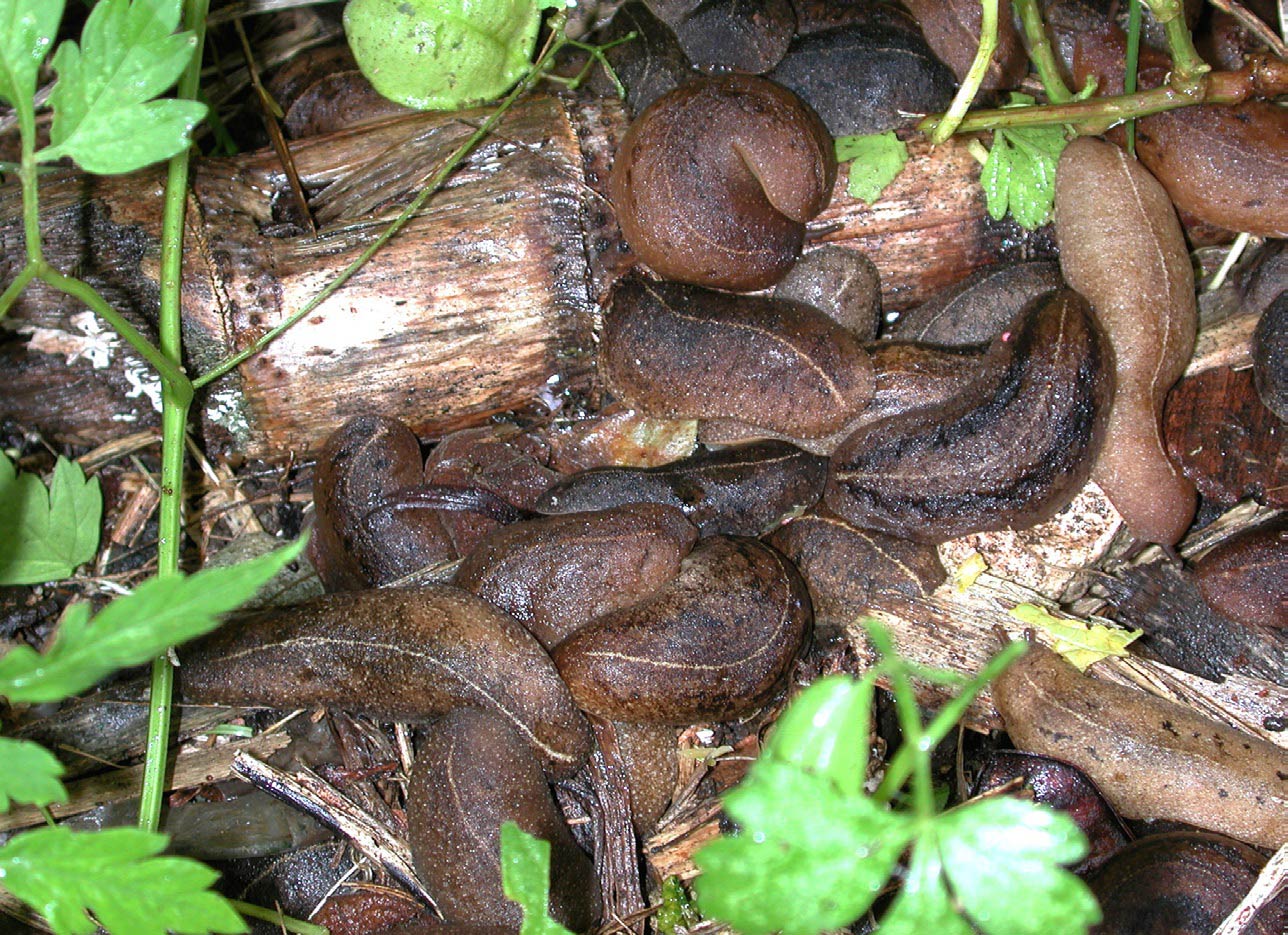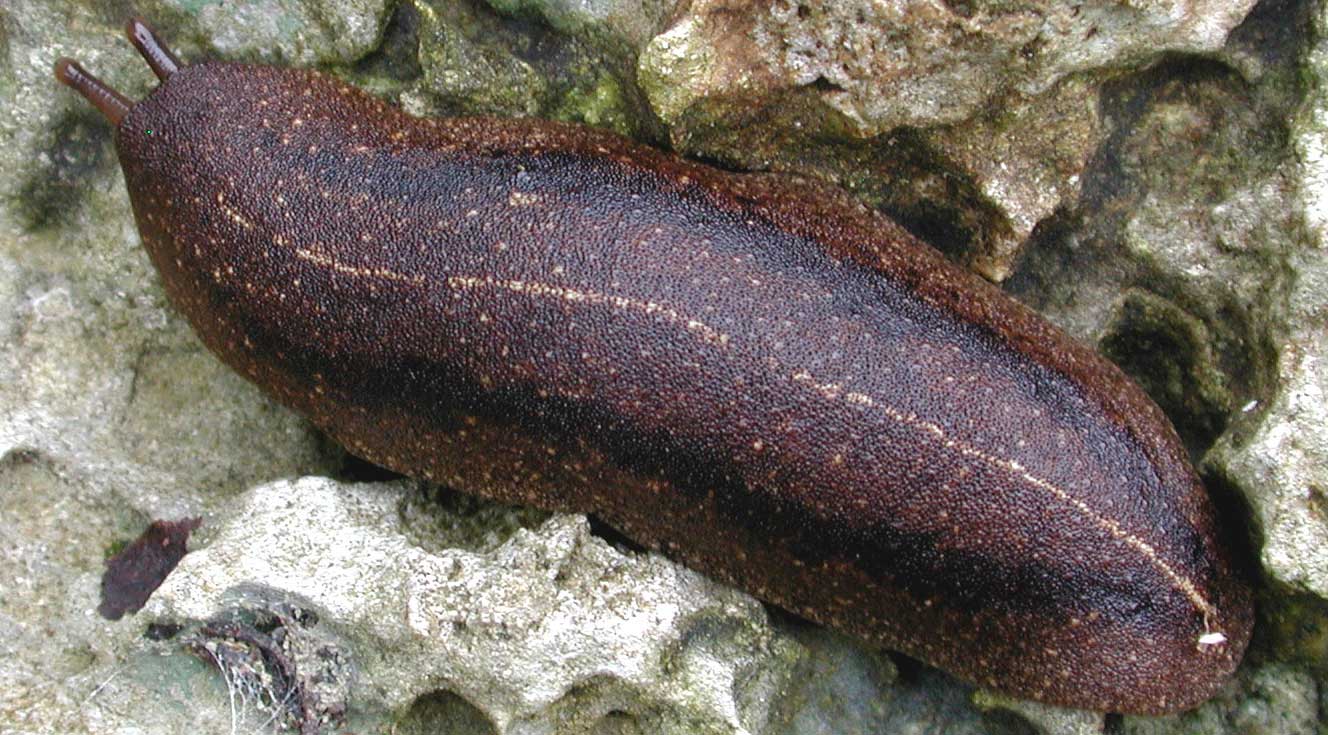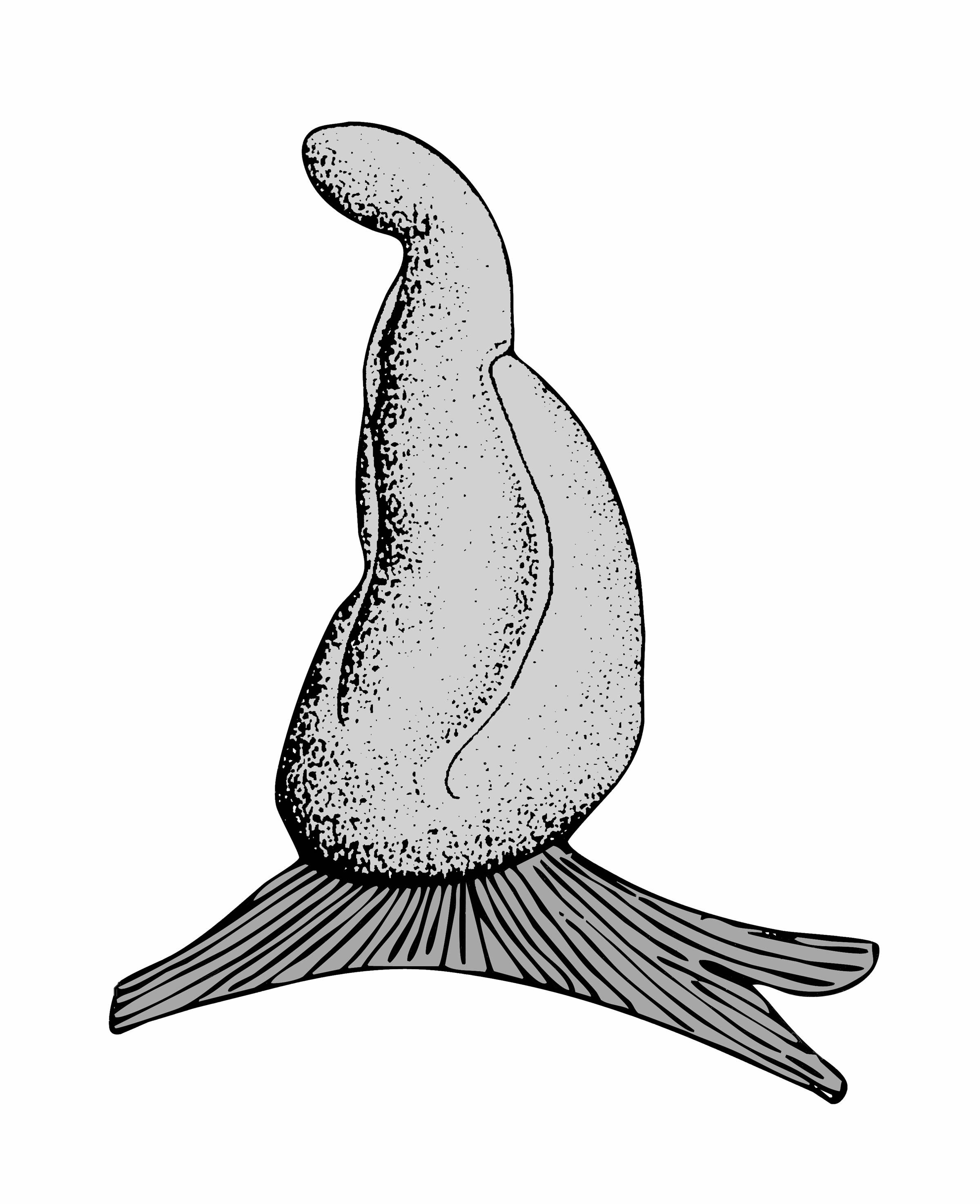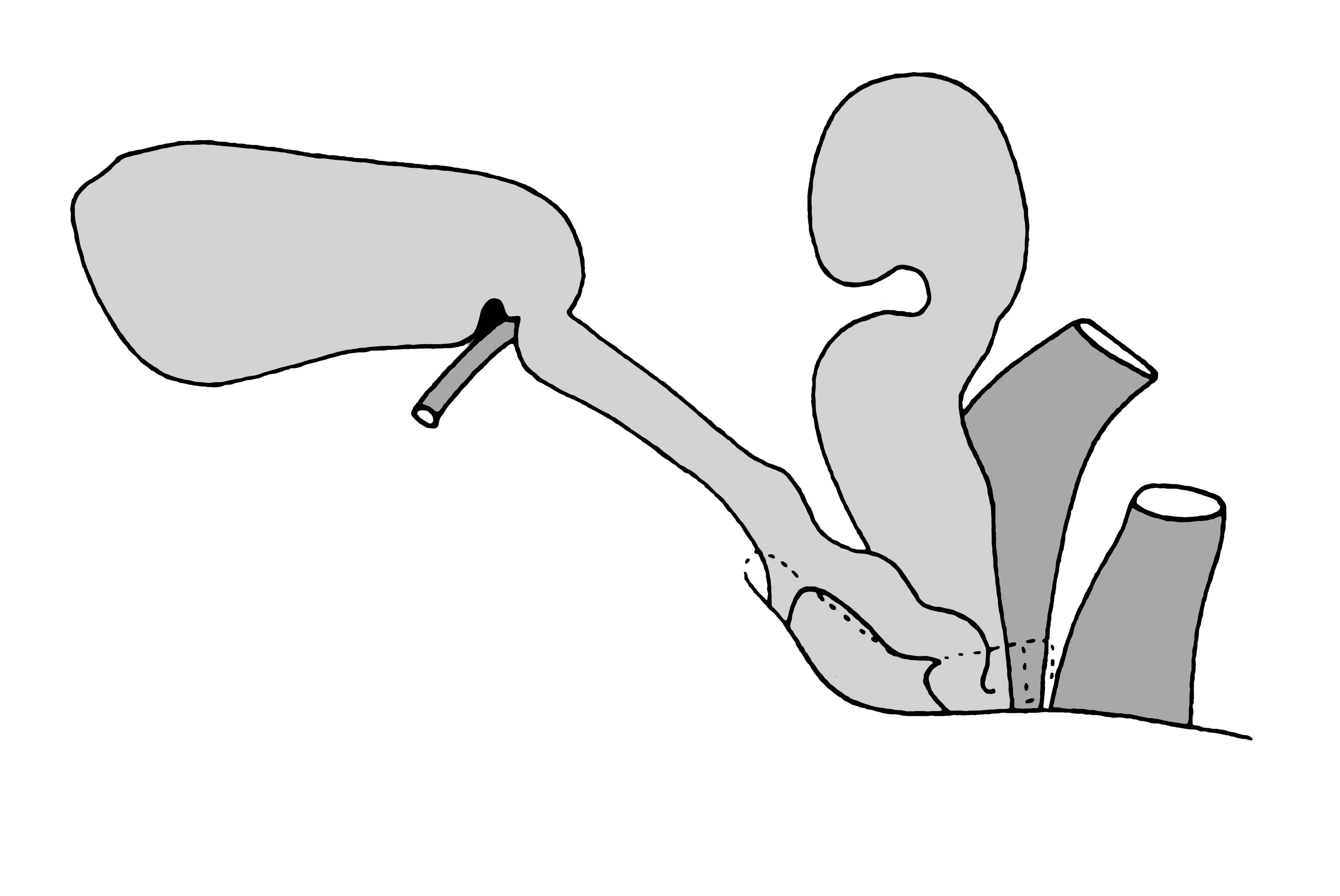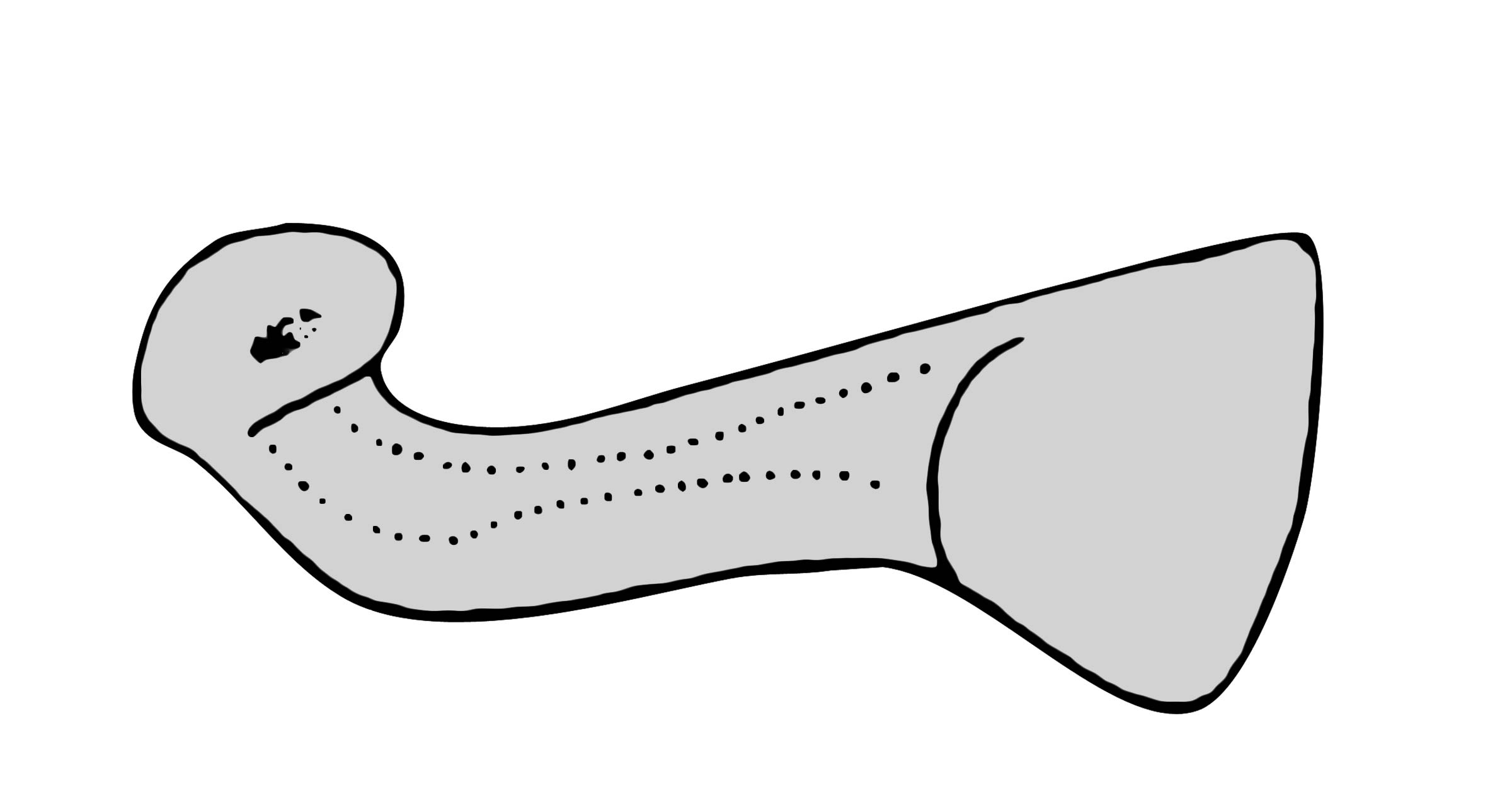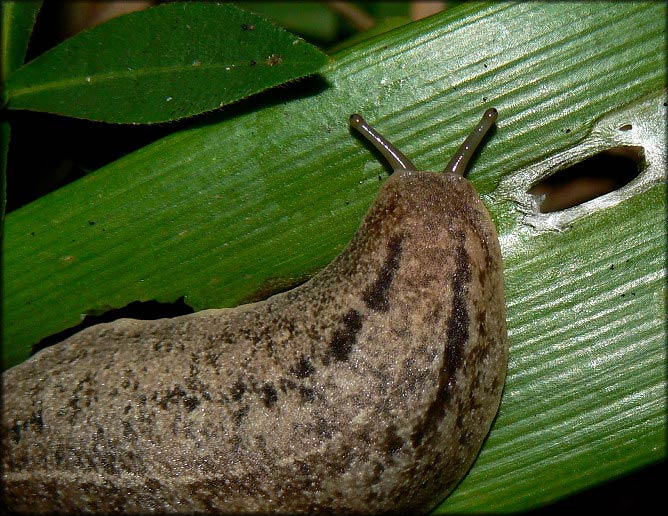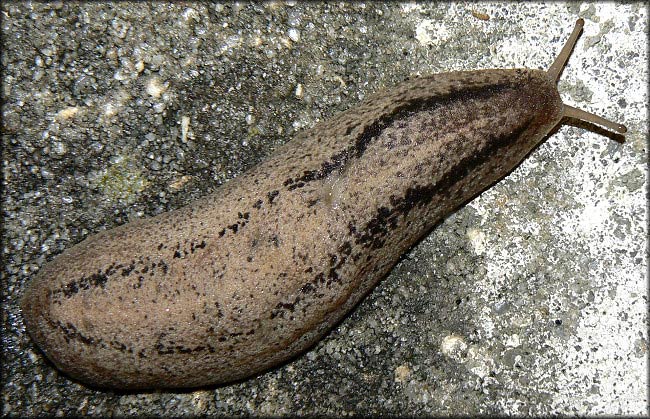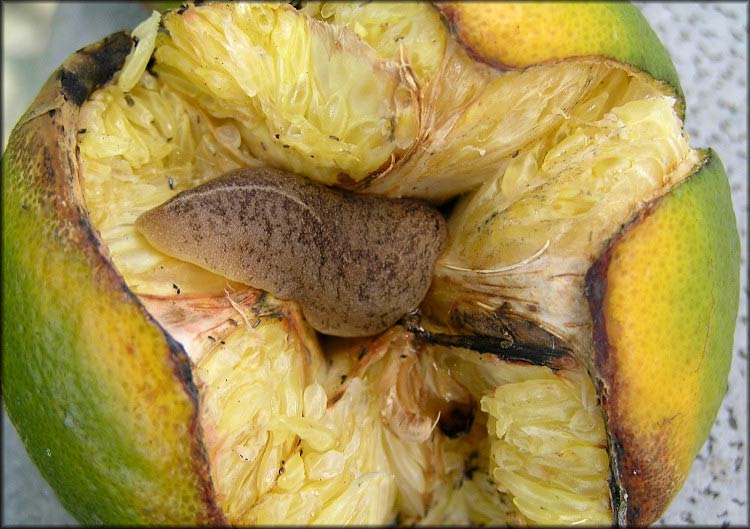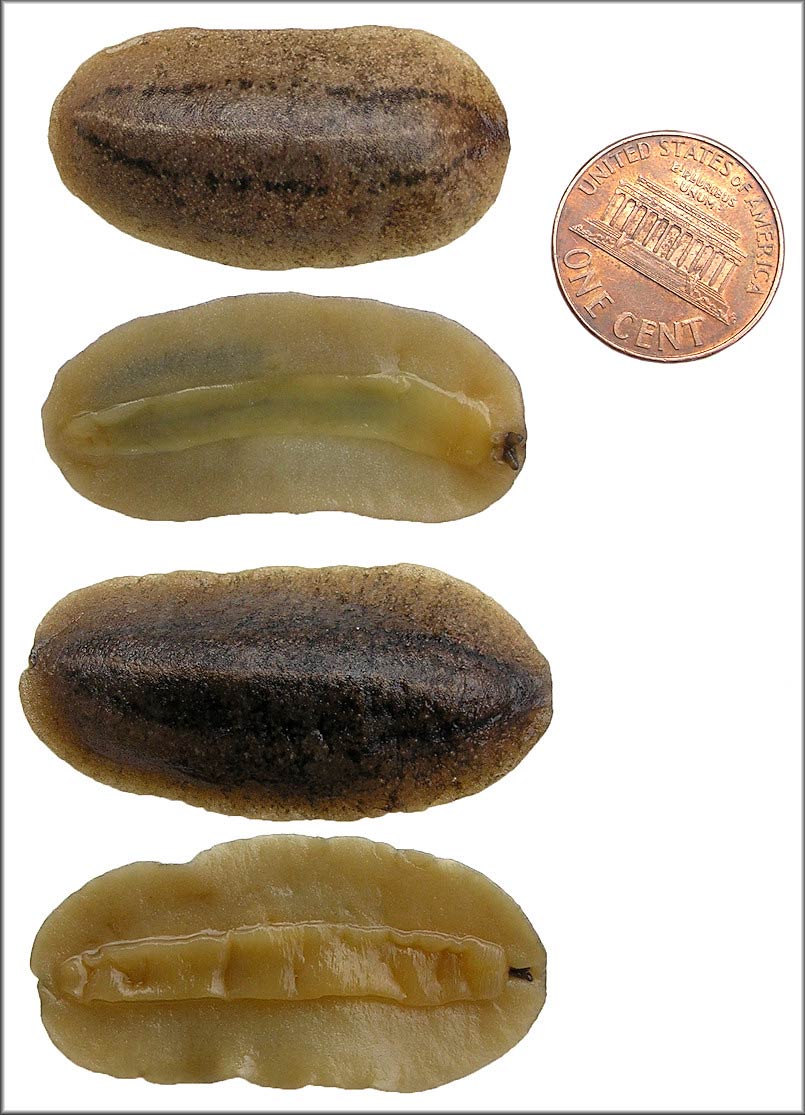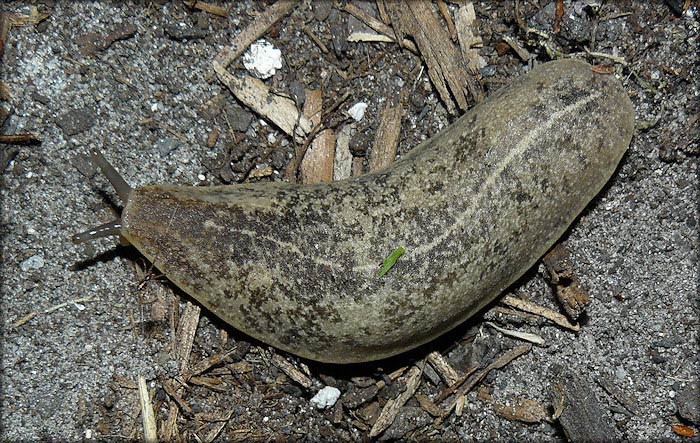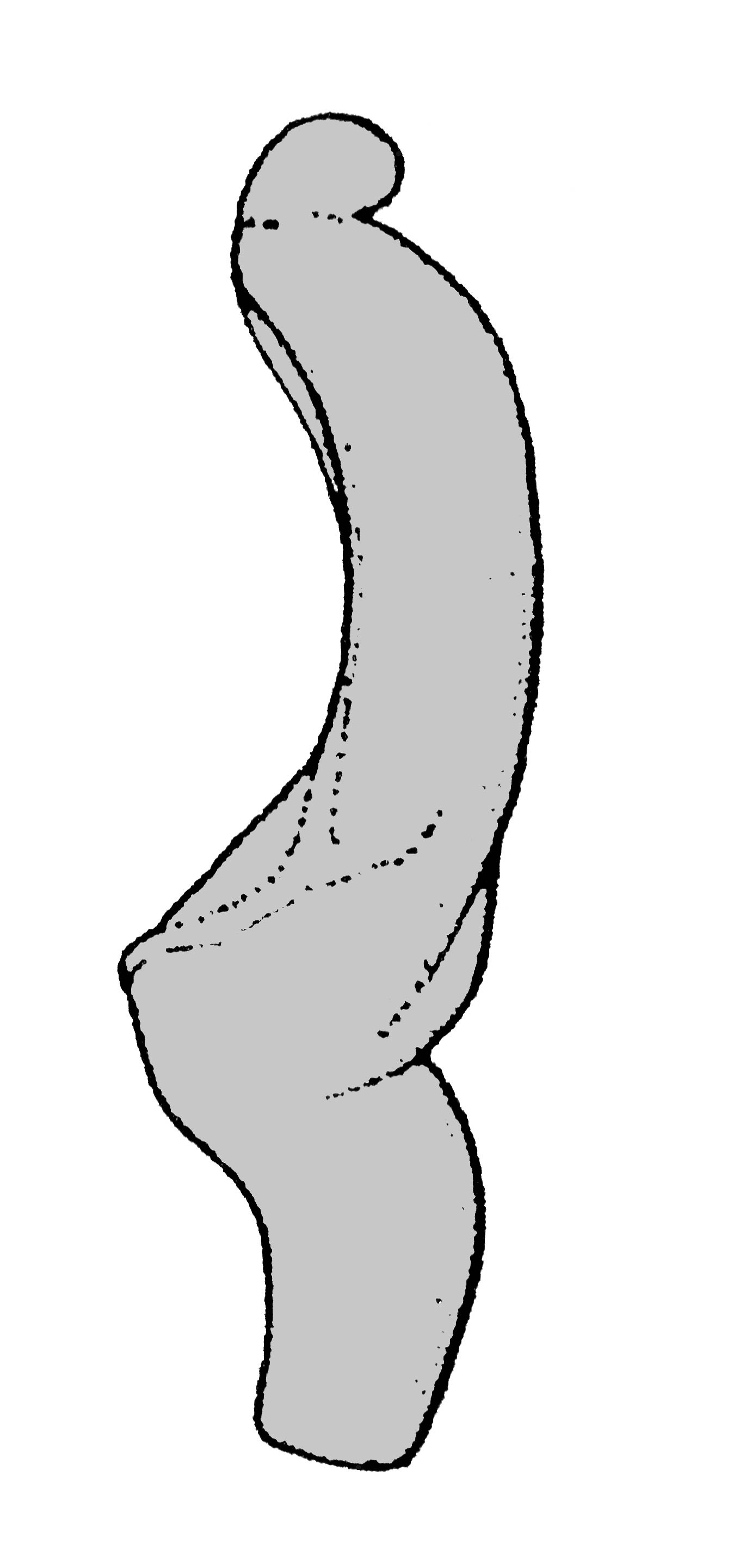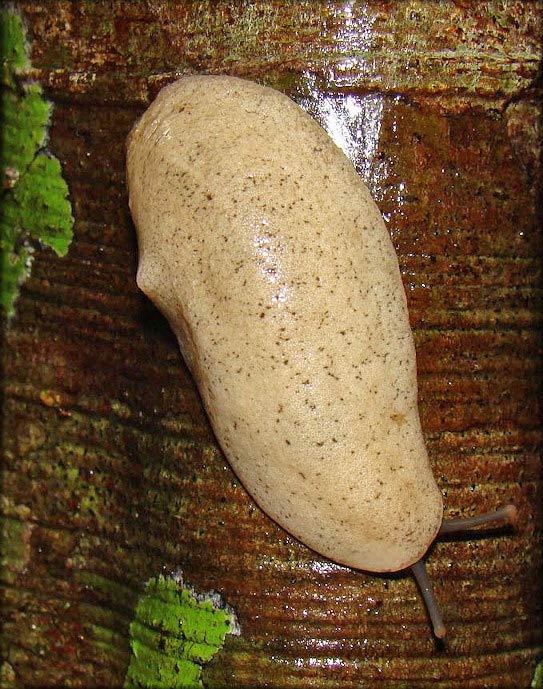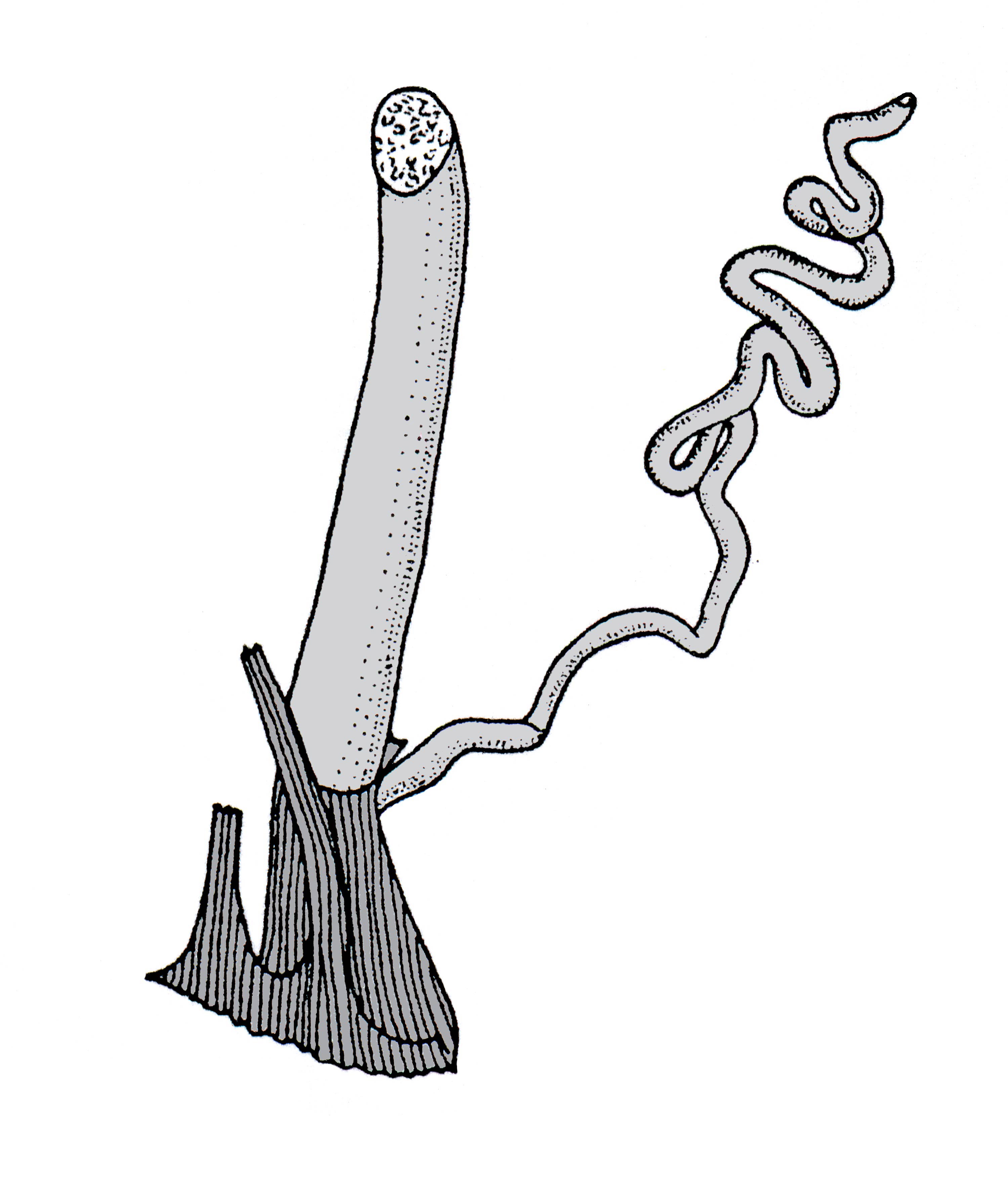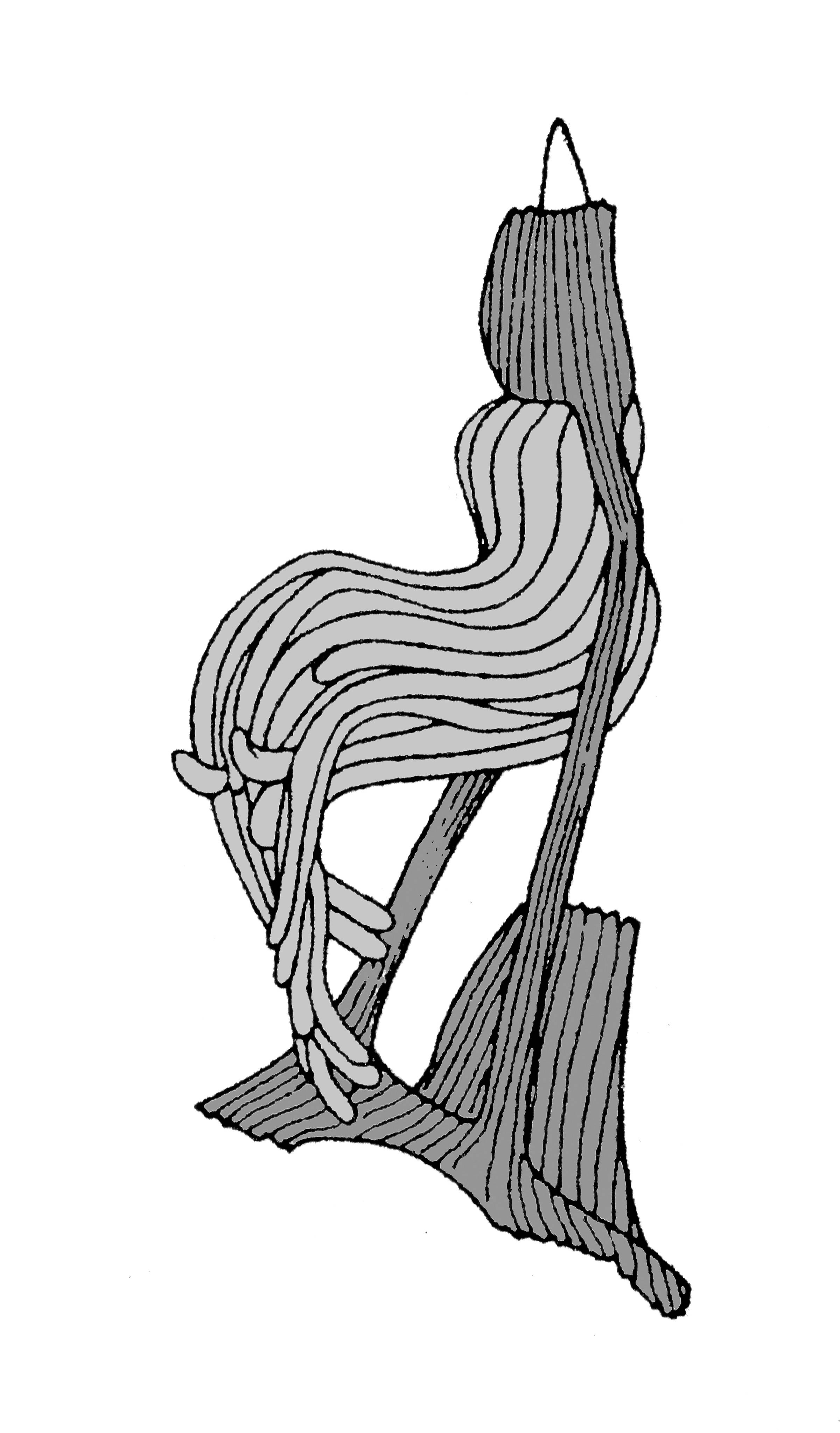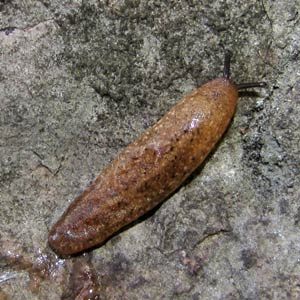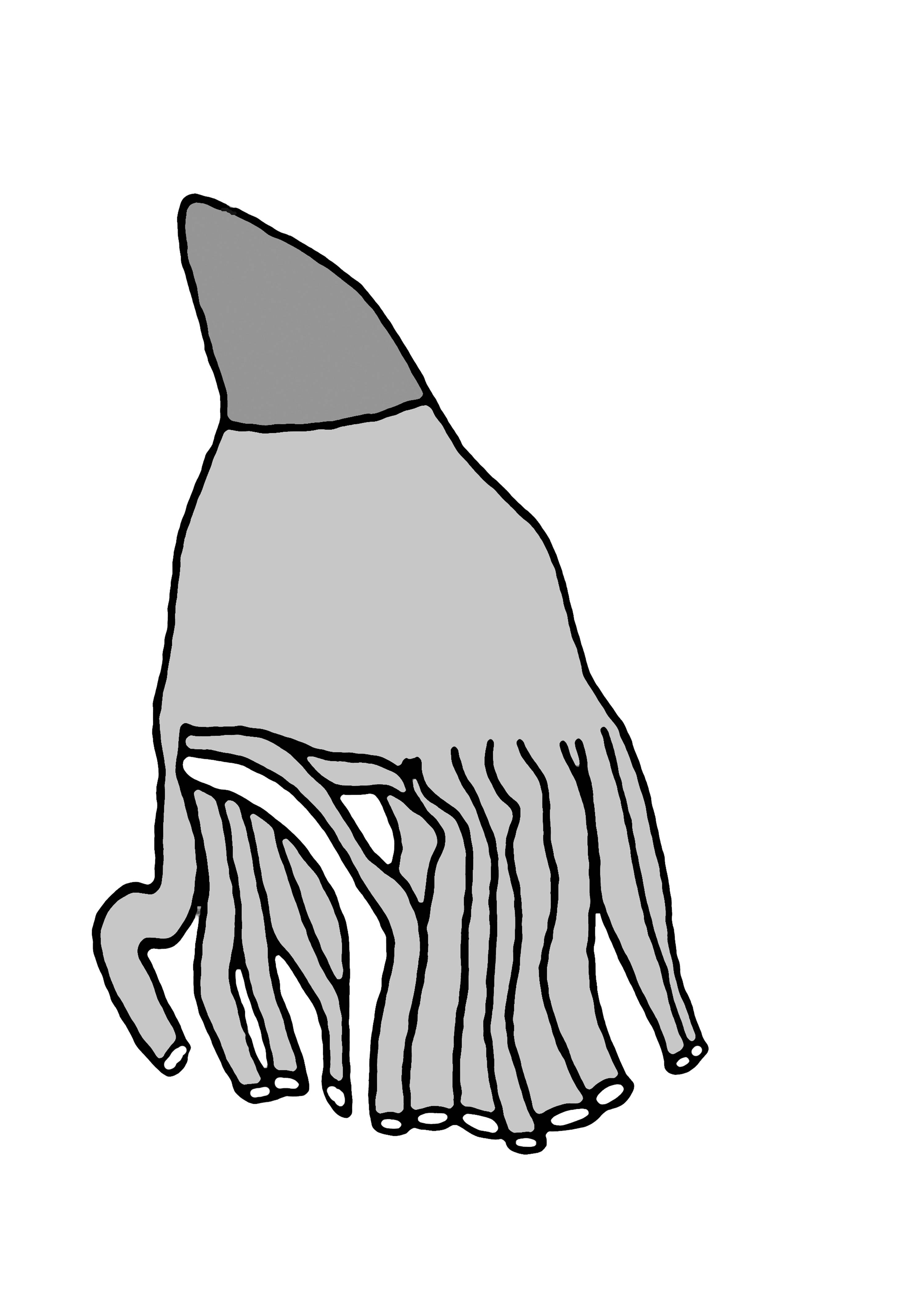Veronicellidae: Veronicella spp.
|
Veronicella cubensis. (Photo: © D. Robinson, USDA-APHIS-PPQ) |
|
Veronicella cubensis. (Photo: © D. Robinson, USDA-APHIS-PPQ) |
|
Veronicella cubensis: feeding on fallen star fruit. (Photo: © D. Robinson, USDA-APHIS-PPQ) |
|
Veronicella cubensis. (Photo: © D. Robinson, USDA-APHIS-PPQ) |
|
Veronicella cubensis: genitalia-penis. (Photo: © T.W. Thome, modified by K. Weigel, University of Florida) |
|
Veronicella cubensis.genitalia-penial gland. (Photo: © T.W. Thome, modified by K. Weigel, University of Florida) |
|
Veronicella cubensis.genitalia-part of the posterior genitalia. (Photo: © T.W. Thome, modified by K. Weigel, University of Florida) |
|
Veronicella cubensis.genitalia-pedal gland. (Photo: © T.W. Thome, modified by K. Weigel, University of Florida) |
|
Veronicella aff. floridana . (Photo: © B. Frank, Jacksonville) |
|
Veronicella aff. floridana . (Photo: © B. Frank, Jacksonville) |
|
Veronicella aff. floridana . (Photo: © B. Frank, Jacksonville) |
|
Veronicella aff. floridana: feeding on fallen citrus. (Photo: © B. Frank, Jacksonville) |
|
Veronicella aff. floridana . (Photo: © B. Frank, Jacksonville) |
|
Veronicella aff. floridana . (Photo: © B. Frank, Jacksonville) |
|
Veronicella aff. floridana . (Photo: © B. Frank, Jacksonville) |
|
Veronicella aff. floridana: genitalia-penis. (Photo: © T.W. Thome, modified by K. Weigel, University of Florida) |
|
Veronicella sloanei. (Photo: © Father A.J. Sanchez Munoz, Father Sanchez's Website of West Indian Natural History) |
|
Veronicella sloanei. (Photo: © Robert Pilla, Flickr.com) |
|
Veronicella sloanei. (Photo: © Robert Pilla, Flickr.com) |
|
Veronicella sloanei. (Photo: © Robert Pilla, Flickr.com) |
|
Veronicella sloanei: genitalia-penis. (Photo: © T.W. Thome, modified by K. Weigel, University of Florida) |
|
Veronicella sloanei: genitalia-penial gland. (Photo: © T.W. Thome, modified by K. Weigel, University of Florida) |
|
Veronicella sloanei: genitalia-posterior genitalia. (Photo: © T.W. Thome, modified by K. Weigel, University of Florida) |
|
Veronicella sloanei: genitalia-pedal gland. (Photo: © T.W. Thome, modified by K. Weigel, University of Florida) |
|
Veronicella moreleti. (Photo: © Jan Meerman, Green Hills) |
|
Veronicella moreleti: genitalia-penis. (Photo: © T.W. Thome, modified by K. Weigel, University of Florida) |
|
Veronicella moreleti: genitalia-penial gland. (Photo: © T.W. Thome, modified by K. Weigel, University of Florida) |
|
Veronicella moreleti: genitalia-part of the posterior genitalia. (Photo: © T.W. Thome, modified by K. Weigel, University of Florida) |
|
Veronicella moreleti: genitalia-pedal gland. (Photo: © T.W. Thome, modified by K. Weigel, University of Florida) |
Family
Veronicellidae
Species
Veronicella floridana (Leidy, 1868)
V. cubensis (Pfeiffer, 1840)
V. sloanei (Cuvier, 1817)
V. moreleti (Crosse & Fischer, 1872)
Common name
Veronicella aff. floridana: Florida leatherleaf slug
V. cubensis: Cuban slug
V. sloanei: Sloan slugSlug:
A snail that either does not possess a shell or has one that is very reduced (no definite coiling) or internal.
, Jamaican slugSlug:
A snail that either does not possess a shell or has one that is very reduced (no definite coiling) or internal.
, Pancake slug
V. moreleti: Tan leatherleaf, Morelet slug
Description
Veronicellid species can only be reliably distinguished from each other through dissections and observation of the genitaliaGenitalia:
The reproductive structures of an animal. May refer to either male or female structure.
.
Veronicella aff. floridana: This species may be distinguished from Veronicella cubensis by the genitaliaGenitalia:
The reproductive structures of an animal. May refer to either male or female structure.
.
V. cubensis: The body color of this slugSlug:
A snail that either does not possess a shell or has one that is very reduced (no definite coiling) or internal.
is variable. There may be multiple shades of brown with two dark stripes running down the length of its back. The lines may be solid or broken up into spots. There may also be an albino form. Another thin, pale white stripe also runs down the midline of the animal. The body texture also varies, where, the body may appear smooth or granularGranular:
Bearing granules on the surface or having a rough appearance.
. This slugSlug:
A snail that either does not possess a shell or has one that is very reduced (no definite coiling) or internal.
can usually be distinguished from other species of Veronicellids by the presence its blue-gray eye tentaclesTentacles:
Sensory projections on the head end of a mollusc. There are generally two pairs; upper (posterior) and smaller, lower (anterior). The upper pair bears the eyes. In many snails the eyes are located at the tips of this structure; however, in Basommatophoran snail species, the eyes are located at the base of the tentacles.
. There is also a pale brown area around the eyespots. Adults will measure between 50-70 mm in length, although lengths of up to 120 mm have been recorded.
V. sloanei: Similarly to the other species of this genus, this animal has variable body color, ranging from albino, to tan to grey with varying degrees of grey markings. It has the potential to attain a maximum length of 120 mm. The tentaclesTentacles:
Sensory projections on the head end of a mollusc. There are generally two pairs; upper (posterior) and smaller, lower (anterior). The upper pair bears the eyes. In many snails the eyes are located at the tips of this structure; however, in Basommatophoran snail species, the eyes are located at the base of the tentacles.
of this species are typically blue-grey with pale brown tips.
V. moreleti: This brown-colored species usually does not have a dorso-median stripe. GenitaliaGenitalia:
The reproductive structures of an animal. May refer to either male or female structure.
: The basal section of the penis is cylindrical. The apexApex:
The tip of the spire of a shell.
is twisted and the entire region is a hardened mass.
Native range
Veronicella floridana: Southern Florida and Greater Antilles
V. cubensis: Greater Antilles (Cuba)
V. sloanei: Greater Antilles (Jamaica)
V. moreleti: South America
Distribution
Veronicella aff. floridana:
North America:
- U.S.: Alabama, Florida; Louisiana, Texas
Central America: Mexico
Caribbean: Puerto Rico, Cuba, Dominica, Jamaica
V. cubensis:
North America:
- U.S.: California
Pacific Islands
Caribbean: Cuba, Hispaniola, Puerto Rico, Saint Kitts, Nevis, Dominica, Barbados
V. sloanei:
Caribbean: Jamaica, Bermuda, Dominican Republic, Grand Cayman, Guadeloupe, Dominica, Barbados, Saint Vincent, Saint Lucia, Cuba
V. moreleti:
North America:
- U.S.: This species has been intercepted in Vermont
Central and South America
Ecology
Pest species have been known to consume both ornamental and agricultural crops: melon, pumpkin, pepper, eggplant, cabbage, cassava, taro, sweet potato, yam, papaya, banana, star fruit, mango, noni, citrus and coffee.
Veronicella aff. floridana: This slugSlug:
A snail that either does not possess a shell or has one that is very reduced (no definite coiling) or internal.
is known as a pest of potatoes in Cuba and that of beans, tomatoes and ornamental plants elsewhere.
V. cubensis: This animal is a serious pest of agricultural and ornamental crops (e.g., papaya production in Hawaii) especially in the Pacific Basin. Crops include but are not limited to the following: banana, cabbage, cassava, citrus, coffee, eggplant, mango, noni, papaya, pepper, pumpkin, satar fruit, sweet potato, taro, yam. It can be found in very moist habitats (e.g., near water bodies).
V. sloanei: This opportunistic pest is quite aggressive and consumes a wide variety of ornamental and agricultural crops. Crops consumed by this pest includes but is not limited to the following: leafy vegetables (e.g., spinach, cabbage, lettuce), dasheen, banana, plantain, tannia, papaya, citrus, bean, peanut, Hibiscus sp. and Bougainvillea sp. This pest can also remove the bark of several plants (e.g., Datura sp. and gardenia), therefore girdling the plant. It will lay clutches of 10-12 eggs in a chain.
V. moreleti: This slugSlug:
A snail that either does not possess a shell or has one that is very reduced (no definite coiling) or internal.
has been described from multiple habitats from lowland jungles to open savannas. It is viviparousViviparous:
Ability to give birth to live young (no eggs produced), where the embryo develops inside the parent. (See also oviviparous)
; therefore, eggs of this species are never intercepted. It has been recorded as a pest of coffee and cacao in Mexico.
Synonyms
Veronicella aff. floridana (Leidy, 1868):
- Leidyula floridana (Leidy & Binney, 1851), Thome, et al. 1997, Annotataed list of Veronicellidae from the collections of the Academy of Natural Sciences of Philadelphia and the National Museum of Natural History, Smithsonian Institution, Washington, D.C., U.S.A. (Mollusca: Gatropoda: Soleolifera). Proceedings of the Biological Society of Washington. 110: 520-536.
- Vaginulus floridanus Leidy & Binney, Binney 1851, The terrestrial air-breathing mollusks of the United States and the adjacent territories of North America. Vol. I. A.A. Gould (ed.) Charles Little and James Brown, Boston, MA. pp. 198, 251, pl. IV.
- Veronicella floridana (Binney, 1851) in Binney, 1885. A manual of American land shells. Bulletin No. 28 of the United States National Museum, p. 528.
V. cubensis (Pfeiffer, 1840):
- Onchidium cubense Pfeiffer, 1840.
- O. cubensis
- Veronicella cubensis Thome, 1975.
V. sloanei (Cuvier, 1817):
- Vaginulus sloanei Ferussac
- V. laevis Blainville, 1817
V. moreleti (Crosse & Fischer, 1872):
- Leidyula moreleti (Crosse & Fischer, 1872)
- Vaginulus moreleti Fischer, 1871 in Fischer, P. 1871. Revision des especes du genere Vaginula Ferussac. Nouvelles Archives du Museum d'Historie Naturelle. Paris. 7: 147-175.
- Vaginulus kreideli Semper, 1885 in Thome, 1971. Redescricao dos tipos de Veronicellidae (Mollusca, GastropodGastropod:
A single-shelled mollusc.
) neotropicais: VII especies depositadas no Museum National d'Histoire Naturelle, Paris, Franca. Iheringia (Zool.) 40: 27-52. - Veronicella (Leidyula) moreleti (Crosse and Fischer, 1872) in Baker, 1925. North American Veronicellidae. Proceedings of the Academy of Natural Sciences of Philadelphia. 77: 157-184.
- Vaginulus mexicanus Strebel and Pfieffer, 1882 in Thome, 1989. Annotated and illustrated preliminary list of the Veronicellidae (Mollusca: GastropodGastropod:
A single-shelled mollusc.
) of the Antilles, and Central and North America. Journal of Medical and Applied MalacologyMalacology:
The study of molluscs.
. 1: 11-28.
References
Cowie 1997Cowie 1997:
Cowie, R.H. 1997. Catalog and bibliography of the nonindigenous nonmarine snails and slugs of the Hawaiian Islands. Bishop Museum Occasional Papers. 50.; Cowie et al. 2008Cowie et al. 2008:
Cowie, R.H., K.A. Hayes, C.T. Chuong, T.Tran and W.M. Meyer III. 2008. The horticultural industry as a vector of alien snails and slugs: widespread invasions in Hawaii. International Journal of Pest Management 54(4): 267-276.; Cowie et al. 2009; Fields and Robinson 2004Fields and Robinson 2004:
Fields, A. and D.G. Robinson. 2004. The slug Veronicella sloanei (Cuvier, 1817) - an important pest in the Caribbean. Abstracts-American Malacological Society, Sanibel. p. 26.; Lechmere Guppy 1866Lechmere Guppy 1866:
Lechmere Guppy, R.J. 1866. On the terrestrial and fulviatile Mollusca of Trinidad. In: Selby, P.J., C.C. Babington, J.E. Gray and W. Francis. 1866. The Annals and Magazine of Natural History including Zoology, Botany and Geology. Volume17, 3rd series. Taylor and Francis. London. Chapter 4: 42-56.; McDonnell et al. 2008McDonnell et al. 2008:
McDonnell, R.J., A. Hansen, T.D. Paine and M.J. Gormally. 2008. A record of the invasive slug Veronicella cubensis (Pfeiffer, 1840) in California. The Veliger 50: 81-82.; Naranjo-García et al. 2007Naranjo-García et al. 2007:
Naranjo-García, E., J. Thomé and J. Castillejo. 2007. A review of the Veronicellidae from Mexico (Gastropoda: Soleolifera). Revista Mexicana de Biodiversidad. 78: 41-50.; Neck 1976; Perez and Cordeiro 2008; Robinson et al. 2009Robinson et al. 2009:
Robinson, D.G., Hovestadt, A., Fields, A. and Breure, A.S.H. 2009. The land Mollusca of Dominica (Lesser Antilles), with notes on some enigmatic or rare species. Zoologische Mededelingen 83: 615-650.; Rosenberg and Muratov 2006Rosenberg and Muratov 2006:
Rosenberg, G. and I.V. Muratov. 2006. Status report on the terrestrial Mollusca of Jamaica. Proceedings of the Academy of Natural Sciences of Philadelphia 155: 117-161.; Stange 2004Stange 2004:
Stange, L.A. 2004. Snails and Slugs of Regulatory Significance to Florida. Pest Alert. Florida Department of Agriculture and Consumer Services: Division of Plant Industry.; Thome 1989Thome 1989:
Thome, J.W. 1989. Annotated and illustrated preliminary list of the Veronicellidae (Mollusca: Gastropoda) of the Antilles, and Central and North America. Journal of Medical and Applied Malacology. 1: 11-28.; Thome 1993Thome 1993:
Thome, J.W. 1993. Erneute Beschreibung von Veronicella cubensis (Pfeiffer, 1840) (Gastropoda: Veronicellidae). [in German with abstract in English]. Archiv für Molluskenkunde 122: 113-121.; Whitney et al. 2004

